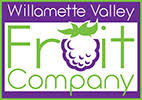The Leafy Greens Food Safety Task Force is suggesting changes to the California and Arizona Leafy Greens Marketing Agreements metrics in the wake of a deadly E. coli outbreak linked to romaine.
The recommendations were scheduled for review Aug. 3 by the Arizona LGMA technical subcommittee, with a 15-day comment period to follow before a final decision by the food safety committee, said program administrator Teresa Lopez. Any changes can then be implemented before the winter season.
The task force is considering an update on best practices related to climatic and environmental conditions to include unusual weather events like extreme wind and frost. The metrics could treat those instances similar to how they treat flooding currently.
Another recommendation would triple the required distance between crops and large concentrated animal feeding operations (CAFOs) from 400 feet to 1,200 feet, said Western Growers vice president Hank Giclas, who led the work group focused on that issue.
The distance prescribed by the LGMAs in their metrics is a starting point, and it can be adjusted based on an analysis of many other factors.
“We need to do some really robust hazard assessments at every individual site because every individual site is different and every individual site is going to require different levels of control and different mitigations and those type of things,” Giclas said.
The work group is now developing tools to help growers conduct those assessments — which consider topography, weather, management practices of nearby operations and other relevant factors — and is aiming to make such tools available as soon as possible.
Scott Horsfall, CEO of the California LGMA, led the group that looked at seasonality issues related to outbreaks, with many occurring late in the season — spring for the Yuma area and fall for California growing regions.
“What we really learned is that we need to get out and find out more about the practices and the conditions that prevail during those time periods, so we’re going to put a team together that will do just that, and we’ve drafted a questionnaire, and we’re going to get some people out taking a look at that,” Horsfall said. “Along with that we’ll develop some training not just for growers and harvesters and shippers but also for the auditors and the folks who are providing some oversight on the farm.”
Bob Whitaker, chief science and technology officer for the Produce Marketing Association, led the group focused on improving communication with federal agencies in the event of an outbreak.
In the longer term, it would be ideal for industry members to be able to contribute information about on-the-ground conditions in the event of an outbreak so investigators have more clues with which to work.
“I don’t know at this time how that would all work, how it would come to be, but I think we have to start understanding that what we’ve been doing is not working as well as what we would like,” Whitaker said. “We’re not moving fast enough, we’re creating confusion, we’re creating a lack of trust with producers and consumers, and all of those things are not where we want to be.
“So it’s maybe time to kind of reimagine the way we look at some of these outbreaks, take a more active role in first of all preventing them and second of all helping solve them …” Whitaker said.
The industry developed the task force in wake of the E. coli outbreak to examine and strengthen best practices. More than 130 people have joined the effort, including leafy greens grower-shippers and buyers like Taco Bell, Chick-fil-A, Blue Apron, Sysco and Wegmans. Representatives of the Food and Drug Administration and the Centers for Disease Control and Prevention have participated as technical advisors.
The FDA investigation into the outbreak found that the widespread illnesses could not be explained by one grower, distributor or processor. Later on, the FDA found the outbreak strain of E. coli in canal water, but the agency has continued to look into how the E. coli entered the water and how the water contaminated romaine lettuce.
Because there have been so many questions about how the outbreak unfolded, the task force opted to create the five work groups to examine the current outbreak and broader topics related to prevention and response.
Based on its work so far, the task force is creating guidance on numerous topics as well as asking for research in many areas related to outbreaks. See the full report on the latest meeting here.















